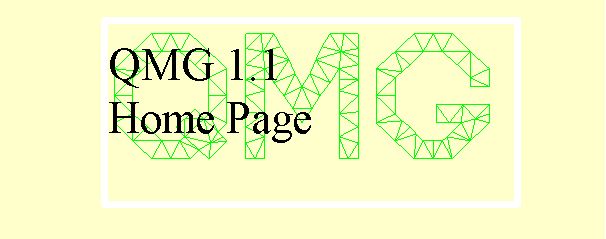

The software includes a sequence of test cases with graphics to illustrate its features.
QMG contains two mesh generators; one is a quadtree/octree algorithm due to S. Mitchell and S. Vavasis. The second is a (2D) Delaunay algorithm based on work by P. Chew and also based on work by W. Mitchell, M. Rivara, and J. Ruppert.
Please select a topic from the following list.
The following pages cover subtopics of the above major topics:
Work on QMG 1.0 was supported by the Division of Advanced Scientific Computing of the National Science Foundation through a Presidential Young Investigator grant. Matching funds were received from Xerox, AT&T, Tektronix, IBM, and Sun Microsystems (not all during the same year).
Development of the Windows versions of QMG was supported by grants from Microsoft and Intel.
Support from Argonne National Laboratory for work on QMG 1.1 is gratefully acknowledged. QMG 1.1 was also developed with support from the National Science Foundation at Cornell.
This documentation is written by Stephen A. Vavasis and is copyright (c) 1996 by Cornell University. Permission to reproduce this documentation is granted provided this notice remains attached. There is no warranty of any kind on this software or its documentation. See the accompanying file 'Copyright' for a full statement of the copyright.
Back to Vavasis's mesh generation home page.
Stephen A. Vavasis, Computer Science Department, Cornell University, Ithaca, NY 14853, vavasis@cs.cornell.edu